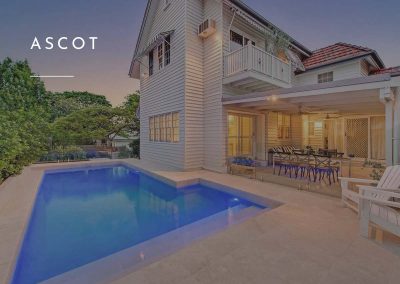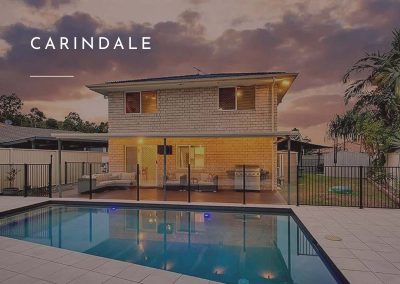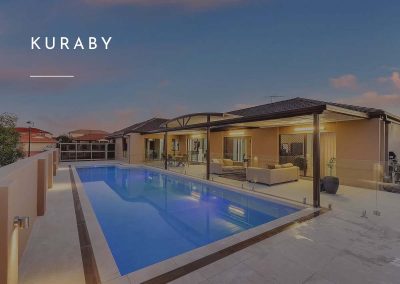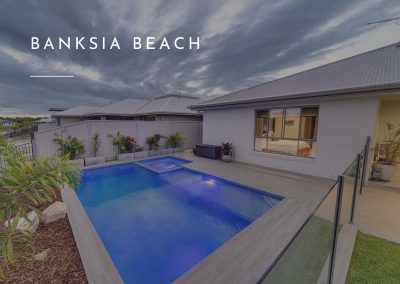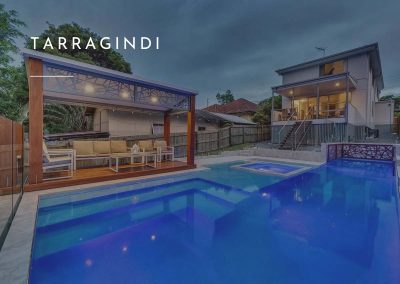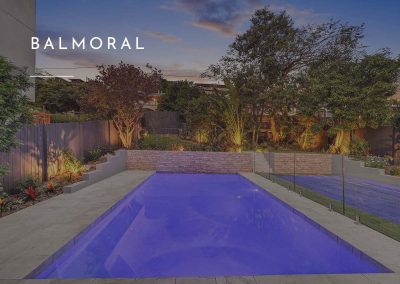Pool Regulations
Understanding Pool Regulations in Brisbane
Pool Building Regulations: Keeping your family safe
At Environ Pools, we prioritise not only the aesthetics and functionality of your pool but also its compliance with Brisbane’s, stringent pool regulations. Navigating the legal requirements can be complex, but understanding them is crucial for the safety and legality of your pool. Let’s dive into the key aspects of pool regulations in Brisbane.
Environ Pools: Your Partner in Compliance and Safety
We understand the importance of adhering to these regulations and are committed to guiding you through every step of the compliance process. Our expertise ensures that your pool is not only a luxurious addition to your home but also a safe and legal one.
Contact us today to discuss how we can help bring your dream pool to life in full compliance with Brisbane’s pool safety regulations.
Overview of Queensland Pool Safety Regulations
The Queensland Building and Construction Commission (QBCC) oversees pool safety regulations in the state, aiming to reduce incidents of drownings and serious immersion injuries in residential pools. The regulations apply to all swimming pools and spas that are capable of holding more than 300mm of water. This includes inflatable pools, portable spas, and permanent swimming facilities.
For detailed information on Queensland’s pool safety laws, visit the QBCC website: QBCC Pool Safety Standard.

Key Pool Safety Requirements
Pool Fencing
A critical component of Queensland’s pool safety regulations is the requirement for a compliant pool fence. The fence must surround the pool or spa entirely, preventing unsupervised access by young children. Key fencing requirements include:
- The fence must be at least 1200mm high from finished ground level.
- The gap between the bottom of the fence and the ground must not exceed 100mm.
- The fence must not have any gaps that are 100mm wide or more.
- All gates must be self-closing and self-latching, opening outward from the pool area.
CPR Signage
Another essential requirement is the display of a current cardiopulmonary resuscitation (CPR) sign within the pool area. The sign must be easily visible and follow the guidelines set by the Australian Resuscitation Council.
Pool Barrier Inspections
Pool owners are required to have their pool barriers inspected and certified as compliant by a licensed pool safety inspector. For new pools, a compliance certificate must be obtained before the pool is filled with water. Existing pools must be inspected and certified every four years.

Non-Climbable Zones: An Essential Component for Pool Safety
One of the critical aspects of ensuring pool safety in Queensland involves the creation and maintenance of non-climbable zones (NCZs) around the pool barrier. These zones are designed to prevent children from climbing over the pool fence, an essential measure to mitigate the risk of unsupervised pool access and potential drownings. According to the Queensland Building and Construction Commission (QBCC), understanding and implementing NCZs correctly is fundamental for pool owners to comply with the state’s stringent pool safety standards.
Understanding Non-Climbable Zones
A non-climbable zone is a space surrounding the pool barrier where no objects or surfaces could assist a child in climbing over the fence. The QBCC mandates that these zones extend in an arc shape from the top of the pool fence outward and downward. Specifically, the NCZ must be at least 900mm away from the pool barrier in all directions. This requirement is crucial for both the outer side of the fence, where potential external climbable objects could be located, and the inner side, ensuring the pool itself remains a secure area.
For detailed guidelines on non-climbable zones, refer to the QBCC’s page: Non-Climbable Zones.
Key Requirements for Non-Climbable Zones
Vertical Clearance: The 900mm NCZ should be free of any climbable objects, including trees, shrubs, deck chairs, or any other items that could provide foothold or handhold opportunities for young children.
Horizontal Clearance: Along with the vertical clearance, any horizontal structures or protrusions near the pool fence must also adhere to the non-climbable zone requirements. This includes the positioning of pool pumps, filters, and other equipment that must not encroach upon the NCZ.
Boundary Fences and Walls: When a boundary fence or wall forms part of the pool barrier, additional considerations apply. For instance, where a boundary fence has horizontal rails on the pool side, it’s necessary to ensure these potential footholds do not compromise the integrity of the NCZ.
Above-Ground Pools and Spas: For above-ground pools and spas, the pool structure itself must not offer climbable elements within the NCZ. Pool owners might need to install a barrier around the pool or spa to comply with NCZ requirements.
Implementing Non-Climbable Zones Effectively
Ensuring your pool’s compliance involves regular checks and maintenance of the NCZs. Pool owners are encouraged to:
- Perform routine inspections of the area surrounding the pool fence, looking for potential climbable objects that may have been inadvertently placed within the NCZ.
- Consult with a licensed pool safety inspector, particularly when making alterations to the pool area or landscaping to ensure ongoing compliance with NCZ requirements.
- Educate family members and visitors about the importance of keeping the NCZ clear of objects, toys, and furniture to maintain the pool’s safety barriers’ effectiveness.

Regulations for Gates, Latches, and Hinges: Ensuring Pool Safety
In Queensland, the safety of swimming pools is taken very seriously, with specific regulations in place concerning the gates, latches, and hinges of pool barriers. These components are crucial for ensuring that the pool area remains secure and inaccessible to young children without supervision. The Queensland Building and Construction Commission (QBCC) provides detailed guidelines to help pool owners understand and comply with these vital safety measures.
Gates: The First Line of Defense
Pool gates must adhere to stringent standards to ensure they function as effective barriers to unsupervised access:
Self-closing and Self-latching: All pool gates must be designed to close and latch automatically from any open position. This is crucial for preventing situations where a gate might inadvertently remain open, posing a risk of drowning.
Opening Outward: The gate must open away from the pool area to ensure that if a child leans against it, the gate does not inadvertently open, granting access to the pool.
Latch Position: The latch for the pool gate must be located on the inside of the gate at least 1500mm from the ground or otherwise shielded to prevent access by small children.
For more information on gate specifications, visit the QBCC guidelines on gates, latches, and hinges: Gates, Latches, and Hinges Standards.
Latches: Securing the Entry
The latching mechanism is a critical component of pool safety, designed to ensure the gate cannot be easily opened by children:
Height Requirements: To prevent children from reaching the latch, it must be placed high enough, typically above the 1500mm mark from the ground.
Mechanical Reliability: Latches must be of a type that will not fail over time due to rust or wear. Regular maintenance checks are recommended to ensure the latch continues to function correctly.
Hinges: The Foundation of Gate Safety
Hinges play a significant role in the functionality of pool gates, ensuring they close reliably:
Tension-Adjustable Hinges: Pool gates should be fitted with tension-adjustable hinges, allowing the closing speed to be adjusted. This ensures the gate closes quickly enough to be safe but not so fast as to be a hazard.
No Climbing Leverage: Hinge designs must not provide any leverage for climbing, which could potentially allow a child to climb over the gate.
Compliance and Safety
Compliance with these regulations is not just about adhering to the law; it’s about ensuring the safety and well-being of children around swimming pools. Non-compliance can lead to hefty fines and, more critically, can increase the risk of drowning accidents. Pool owners are encouraged to conduct regular inspections of gates, latches, and hinges as part of their pool maintenance routine to ensure ongoing compliance and safety.

Understanding Pool Regulations for Doors, Windows, and Balconies
In Queensland, pool safety regulations extend beyond the immediate pool area to include doors, windows, and balconies that provide access to the pool area. These regulations are designed to prevent accidental access to the pool by young children, thereby reducing the risk of drowning. The Queensland Building and Construction Commission (QBCC) has set forth specific requirements that homeowners must adhere to, ensuring that all potential entry points into the pool area are secured.
Doors Leading to Pool Areas
Doors that provide direct access to the pool area are subject to stringent safety standards:
Self-closing and Self-latching Mechanisms: Any door that leads directly to the pool area must be equipped with a self-closing mechanism that ensures the door closes automatically from any partially open position. Additionally, the door must have a self-latching device to ensure it cannot easily be opened by young children.
Latch Height Requirements: The latching device on doors must be placed at least 1500mm above the floor level to ensure it is out of reach of small children. This requirement is crucial in preventing young children from gaining unsupervised access to the pool area.
Windows Overlooking the Pool Area
Windows that open into the pool area also have specific requirements to enhance pool safety:
Restricting Openings: Windows that can open into the pool area must be either fixed or have devices installed that restrict the opening to less than 100mm. This restriction is designed to prevent children from climbing through windows to access the pool area.
Secure Screens: Alternatively, windows may be fitted with secure screens that do not allow a child to pass through, providing an additional layer of security while still permitting ventilation.
Balconies Overlooking the Pool
Balconies that have direct access to or provide a potential risk of falling into the pool area are regulated under Queensland’s pool safety standards:
Barrier Requirements: Balconies must have barriers that prevent children from climbing over them to access the pool. These barriers should be at least 1200mm high and designed in a way that does not provide footholds for climbing.
Non-Climbable Zone (NCZ): Similar to pool fencing requirements, balconies must also adhere to NCZ regulations, ensuring there are no climbable objects within 900mm of the balcony barrier, both inside and outside.
Compliance is Key
Adherence to these regulations for doors, windows, and balconies is not only a legal requirement but a critical measure to ensure the safety of all pool users, especially young children. Homeowners are encouraged to conduct regular checks to ensure compliance with these standards and to make necessary adjustments to any doors, windows, or balconies that could provide unsupervised access to the pool area.
For homeowners in Queensland, understanding and implementing these safety measures can significantly reduce the risk of pool-related accidents. It’s part of creating a safe and enjoyable outdoor living space that everyone can enjoy with peace of mind. For more detailed information on these regulations and how to ensure your property complies, visit the QBCC’s guidelines on Doors, Windows, and Balconies.

Queensland Pool Regulations
Queensland’s pool safety regulations are designed to protect the most vulnerable members of our community from the dangers of drowning. By adhering to these standards, pool owners can provide a safe environment for families and guests to enjoy the pleasures of swimming and relaxation. Compliance not only ensures the safety of loved ones but also contributes to the broader community effort to reduce drowning incidents in residential settings.
For pool owners in Brisbane and across Queensland, understanding and implementing these regulations is not just a legal obligation but a moral one. Environ Pools, as a leader in constructing luxury pools in Brisbane, is committed to promoting pool safety and compliance.
We encourage all pool owners to stay informed about pool safety standards and to take proactive steps in ensuring their pools are safe and compliant.
For more information on pool safety regulations and how to ensure your pool meets Queensland’s standards, visit QBCC’s Pool Safety Information.
Take a look at our Stunning Pool Projects
Norman Park
The Gap
Crestmead
Hendra
Manly
Carindale
Balmoral
Yeronga
Tarragindi
Seven Hills
Samford
Mount Pleasant
Jimboomba
Bulimba
Albion
Stafford Heights
Rochedale
Morningside
Kenmore Hills
Hawthorne
Banksia Beach
Albion
Everton Hills
North Lakes
Mitchelton
Margate
Kuraby
Holland Park
Forest Lake
Carindale
Carindale
Carindale
Carina Heights
Bunya
Bucan
Bellbowrie
Ascot
Hamilton
Tarragindi
Camp Hill
Karalee
Albion
Indooroopilly
What’s New in Outdoor lifestyle & Pool Design
The Role of a Luxury Pool in Securing Premium Rents and Resale Value
Picture this: you're walking through yet another investment property when you step into the backyard and see a stunning concrete pool that immediately changes everything. Suddenly, you're not...
The Interstate Investor’s Guide to Managing a Brisbane Property with a Pool
Picture this: you've just purchased a stunning Brisbane investment property complete with a sparkling pool that's guaranteed to attract premium tenants. The rental yield looks promising, and...
Year-Round Pool Enjoyment: Designing for Brisbane’s Climate
In Brisbane's subtropical paradise, a swimming pool shouldn't be just a summer indulgence but the centrepiece of a comprehensive outdoor lifestyle designed for year-round enjoyment. Today's most...







